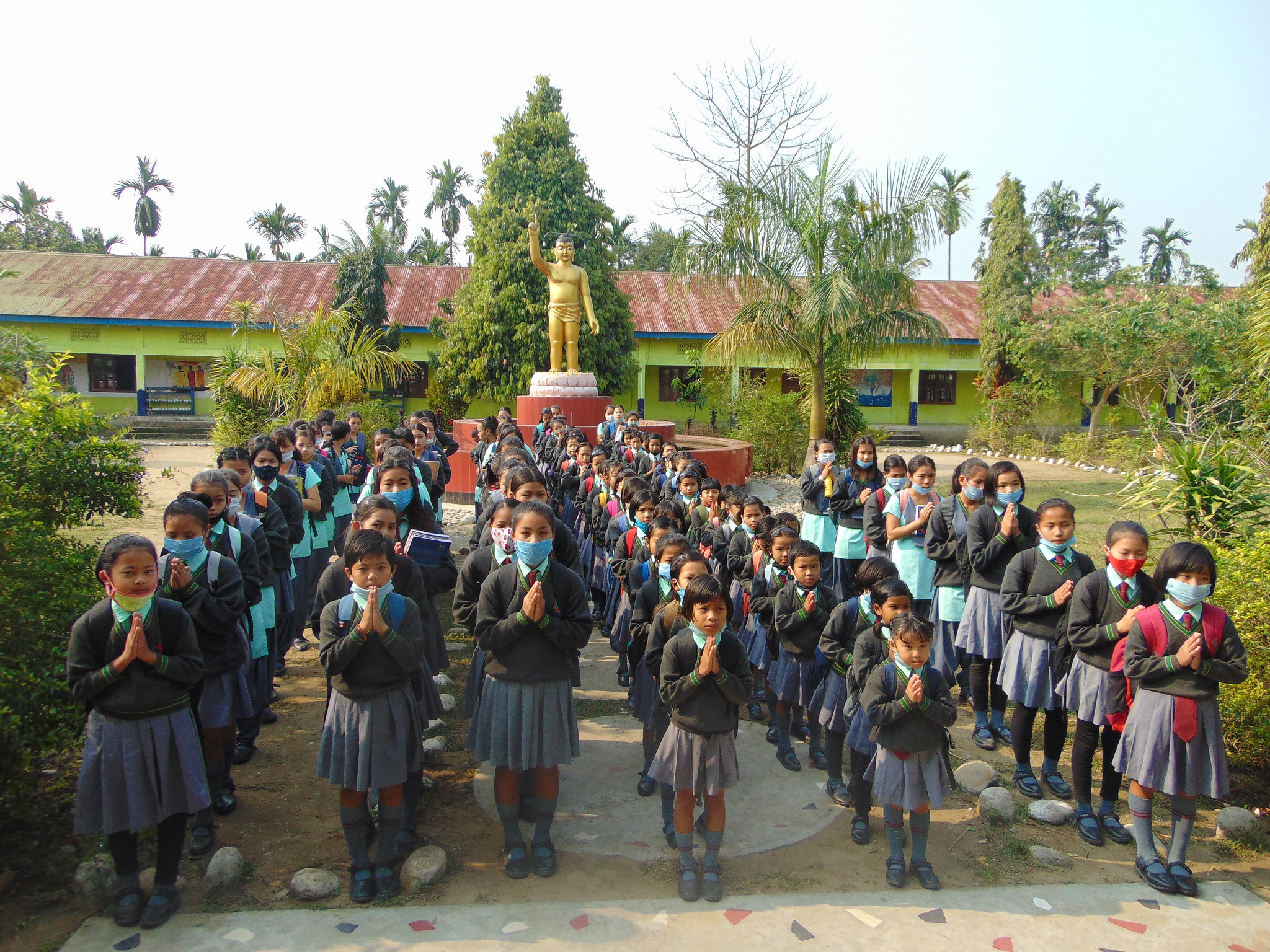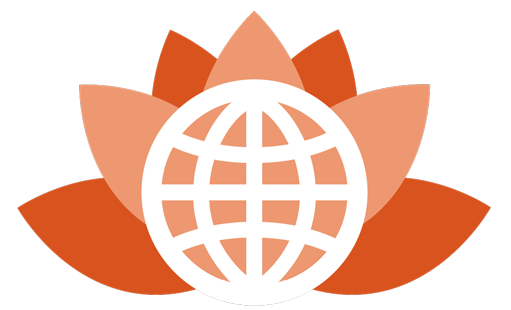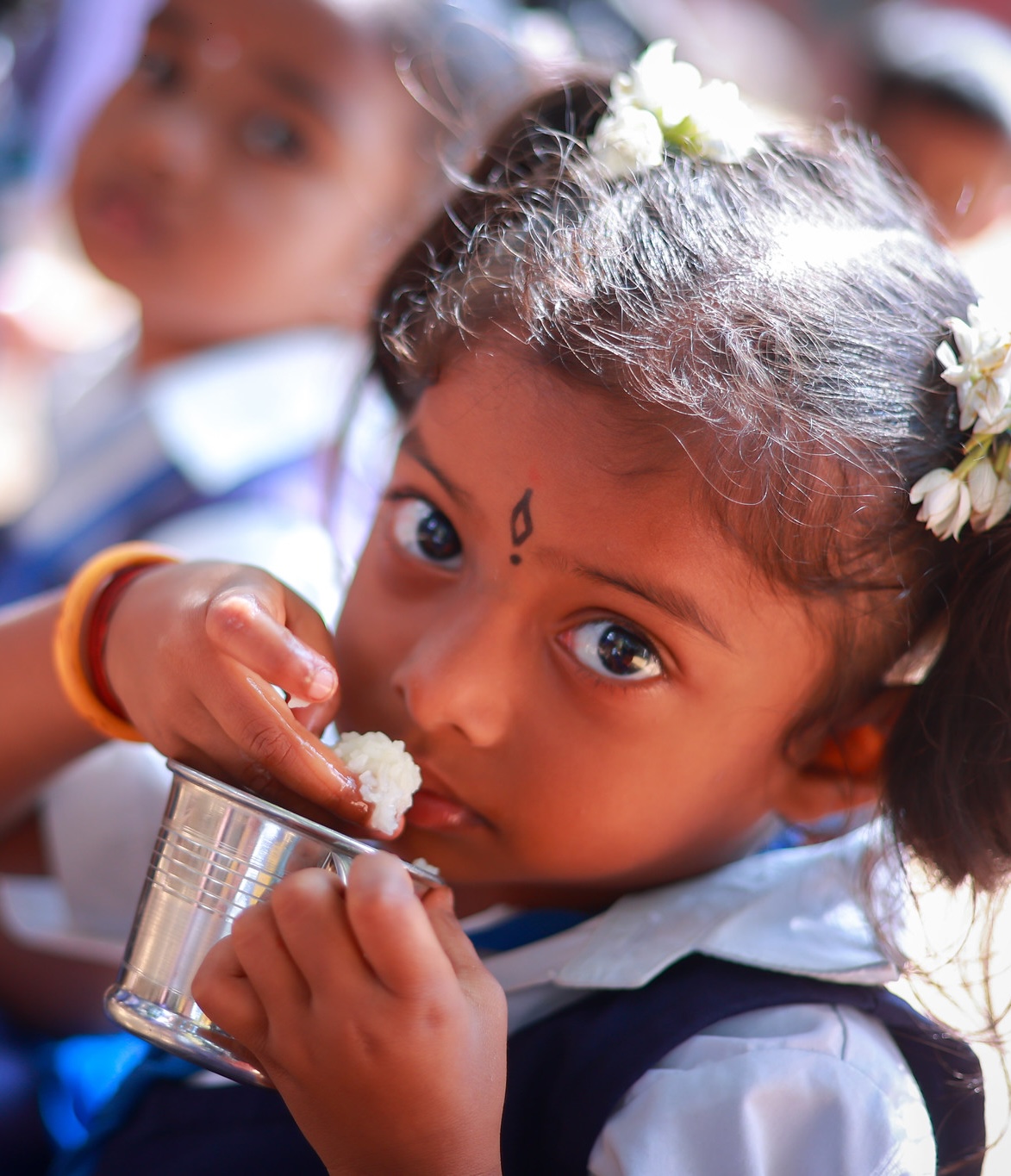Praying for world peace before classes begin.
By David Braughton
Providing food support to undernourished students in the Arunachal Pradesh branch of the Maha Bodhi Maitri Mandala not only improves their health, but also enhances their capacity to succeed in their studies.
The Arunachal Branch of the Maha Bodhi Maitri Mandala is situated in a remote corner of northeastern India at the foothills of the Himalaya mountains. The branch falls under the umbrella of the Maha Bodhi Society of Bengaluru (Bangalore), founded by the late Ven. Acharya Buddharakkhita and currently administered by Ven. Buddharakkhita’s monastic disciples. Ven. Buddharakkhita had long wished to start a branch of the Maha Bodhi Society in Arunachal Pradesh, where most of the inhabitants are traditional tribal Buddhists. The Mahabodhi Maitri Mandala (MMM) was founded in Diyun, a remote place in Arunachal Pradesh, on 3rd January 2003 with a primary school and hostel.
The branch was established to serve the poor and needy people of the region, most of whom are members of the Chakma tribes. Originally residing in the Chittagong Hill Tract region of what is now Bangladesh, since the early sixteenth century the Chakmas have struggled for sovereignty and stability. After centuries of conflict with Muslim invaders, their plight only worsened with the colonialization of the Indian subcontinent under the British. From 1777 to 1789 the Chakmas waged war with the East India Company, which ended when the king of the Chakmas agreed to accept the company’s hegemony and pay tribute in the form of cotton.
With the partition of India following its independence from Britain, the Chittagong Hill Tract region was ceded to Pakistan, even though its population was 98% non-Muslim. The creation of East Pakistan, as the area was called, paved the way for ongoing war, violence, and conflict, and the first mass migration of Chakmas to India. Later, when East Pakistan was established as a separate country, named Bangladesh, the Pakistan government that still held sway in Chakma areas responded by building the Kaptai Dam to punish the Chakmas. Over 54,000 acres of Chakma farmland was submerged, leading to a second mass migration to northeast India.

Distributing fruits at mealtime.
Although the Chakma lands surrounding Diyun are rich in natural resources, the Chakmas lag behind the rest of India due to the prevalence of subsistence farming, a weak industrial base, poor infrastructure, political unrest and violence, and a reliance on public sector employment. The last major road building occurred over four decades ago, and the closest modern hospital is 13 hours away in the state of Assam. Most schools are government-run and may house as many as a hundred children in a single classroom. Children commonly drop out of primary school, resulting in an adult literacy rate of only 67%.
Surviving on subsistence farming, nearly 35% of the population falls below the Indian poverty line, which is equivalent to U.S. $361 US annually. According to a report published in 2013, over 50% of the area’s adult population is either unemployed or not participating in the workforce.
Given the area’s social and economic challenges, it is no surprise that the Maitri Mandala focused on opening a school for young children as its first venture. Classes and a youth hostel for orphans and the poorest students were originally housed in bamboo huts. Later, the organization was able to acquire land and build a school along with dormitories for girls and boys. Today there are 640 students enrolled in the school and 253 children living in the dormitories.
When the Maitri Mandala approached BGR for assistance in 2018, its leadership was struggling with a complex set of interconnected challenges. The children who came to the school were malnourished and grappling with a variety of health-related concerns that limited their ability to concentrate, study, and learn. Funds needed to operate the school and serve even more children had to be diverted to healthcare. Poor educational outcomes also meant that students would drop out and the school and other programs could lose community support.
In response to these many challenges, the Maitri Mandala developed a simple theory of change: provide three nutritious meals to students daily to improve student health, which, in turn, would improve educational outcomes. When they came to BGR for assistance, the BGR Board applauded their proposal and awarded the organization a grant to support their project.

Presenting schoolbooks to happy children.
At the end of the first grant year, the Maitri Mandala reported that BGR support had enabled them to vastly improve both the quantity and quality of food served to the children. They had added rice, dal, fried vegetables, boiled vegetable curries, and fruit! In addition, they could now offer kids an afternoon snack. The impact was almost immediate. The number of children each month who complained of physical weakness, skin disease, and other illnesses related to malnutrition dropped by 50%, and more children were participating in sports and other physical activities than ever before. Equally significant, 94% of senior students passed the Central Board of Secondary Education exams, a standard test required in order to advance academically. The reduced cost of healthcare meant that the organization could increase teacher and staff pay by 1000 rupees a month, the equivalent of $13.38.
The onset of the pandemic required still more innovation on the part of the Maitri Mandala. Confronted with a nationwide lockdown, they used BGR support (which had now doubled) to provide rice, sugar, flour, milk, and other food items to the families of their poorest students. And when the children were finally able to return to school, the emphasis was on improving their health through a rigorous feeding program. As with the first year of funding, the results have been impressive with even more children passing their Central Board exams.

Expressing gratitude to Buddhist Global Relief and our community of supporters.
Often, it is hard, if not impossible to measure the good we do. Certainly, this is no less true for the over 45 organizations and projects that Buddhist Global Relief funds each year. Solving hunger is especially challenging because there is no single cause for hunger. If it were simply a matter of providing enough food to meet the nutritional needs of a child or its family today, we could do that. The issue becomes how to ensure that this same child and family continue to have sufficient food tomorrow and the day after, particularly when they are faced with the overwhelming challenges of civil strife, climate change, outdated farming techniques, poverty, illiteracy, natural disasters, inflated food prices, inadequate infrastructure, poor health, disease and now a pandemic.
The experience of the Maha Bodhi Maitri Mandala Arunachal Branch is proof that by joining together, we can make a difference, no matter how intractable or complex the problem. People of good heart, motivated by compassion and focused on what is essential, can open up the future to a child and to a community, if only they are focused on the fundamentals and are willing to try.
David Braughton is the vice-chair of Buddhist Global Relief. He has worked for over 35 years in human services related to a range of human needs including refugee resettlement, employment and youth services.
All photos courtesy of Maha Bodhi Maitri Mandala.





